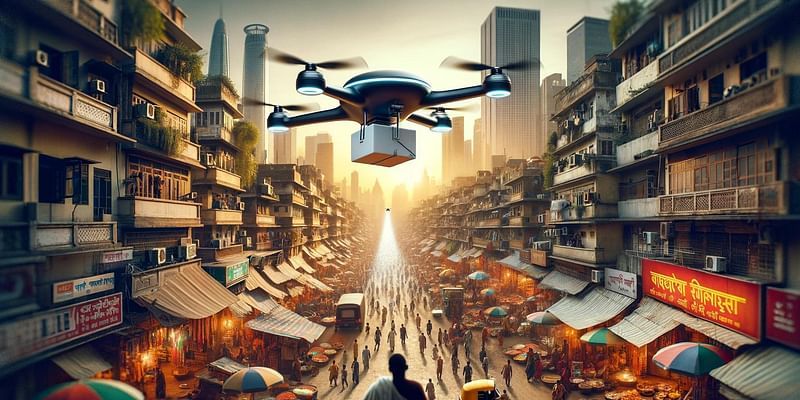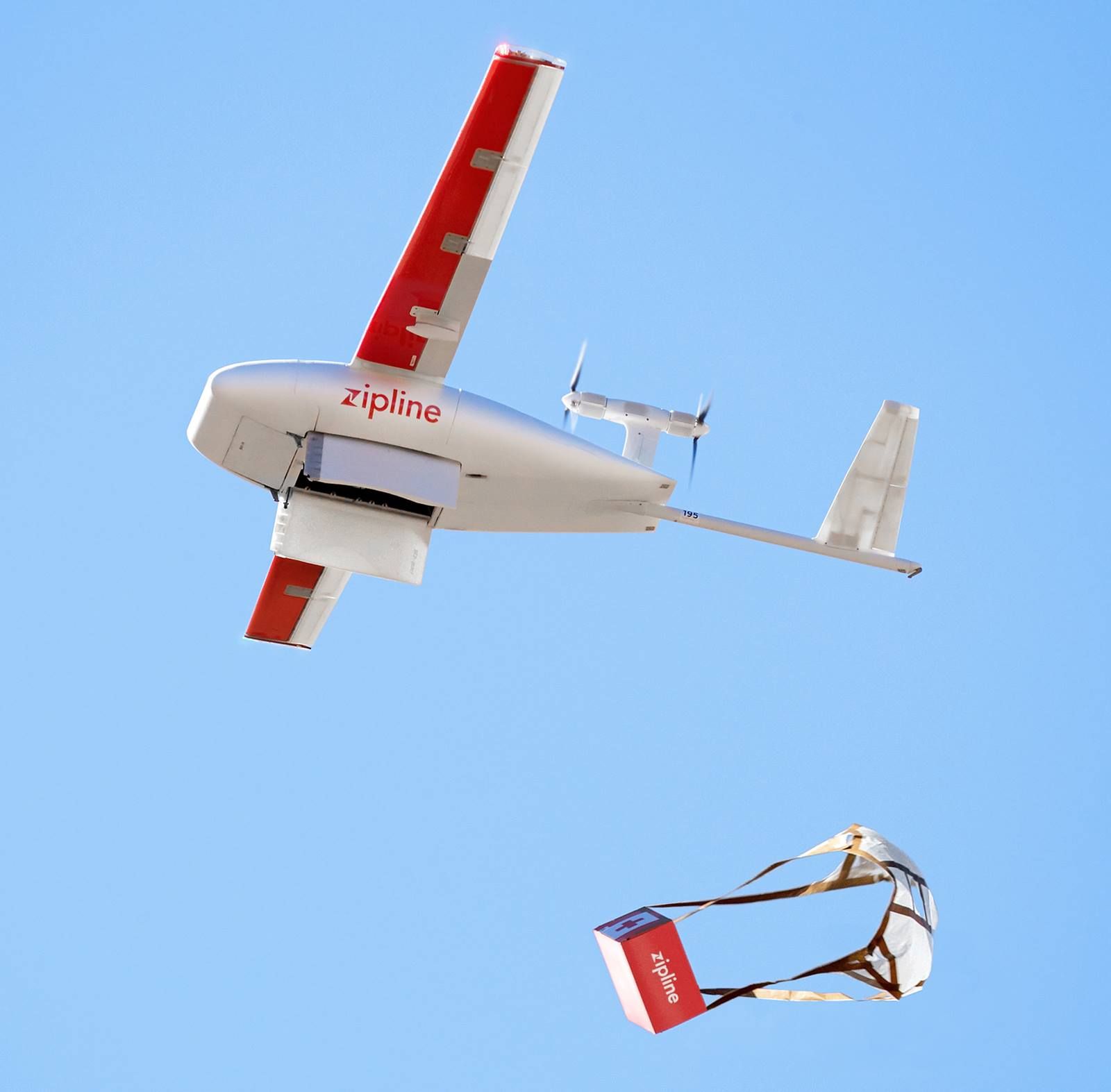
In the era of rapid technological advancement, the concept of drone delivery has soared from mere science fiction to a tangible reality. Companies across the globe are increasingly embracing this futuristic method of delivery, promising a revolution in how we receive packages. Among the pioneers in this field is Zipline, a company that has gained international acclaim for its innovative use of drone technology to deliver medical supplies, food deliveries, groceries, etc in several areas. However, when we turn our gaze towards India, the dream of widespread drone delivery seems to hover on the horizon, seemingly out of reach. Let’s explore why this promising technology faces turbulence in the Indian context.
The Dawn of Drone Delivery
Drone delivery represents the pinnacle of convenience and efficiency, offering to slash delivery times, reduce carbon footprints, and access hard-to-reach locations. Companies like Zipline have set the gold standard in drone delivery, showcasing the potential of this technology. Zipline’s drones are marvels of engineering, capable of flying autonomously over vast distances, dropping off supplies with pinpoint accuracy, and then returning to base without the need for a human pilot. This technology has proven especially beneficial in delivering critical medical supplies in parts of Utah, several parts of Africa, and Japan transforming delivery in regions previously constrained by geographical barriers.
Zipline: Leading the Skies

Zipline’s success story is not just about the drones themselves but also about the sophisticated technology that powers them. Utilising cutting-edge advancements in GPS and autonomous navigation systems, Zipline’s drones can operate in a variety of weather conditions, covering distances of up to 160 kilometers. The company’s operations are a testament to the potential of drone delivery to make a significant impact on society, especially in areas that are difficult to serve through traditional means.
The Indian Scenario: A Flight of Fancy?
Despite the clear advantages and proven success stories of drone delivery in other parts of the world, India faces unique challenges that make the widespread adoption of this technology a far-fetched dream. Here’s why:
- Regulatory Roadblocks: The Indian regulatory environment for drones is still in its nascent stages, with stringent restrictions on drone operations. The complexity of securing permissions for flying drones, especially in urban areas, poses a significant hurdle for companies looking to implement drone delivery on a large scale.
- Infrastructure Issues: Unlike the open savannas of Africa where Zipline operates, India’s densely populated urban areas, coupled with its diverse and often challenging terrain, present significant logistical challenges for drone navigation and delivery.
- Technological Teething Troubles: While companies like Zipline have honed their technology in specific environments, adapting these solutions to the Indian context requires overcoming significant technological hurdles, such as navigating through heavy air traffic and monsoon weather conditions.
- Cost Considerations: The initial investment in drone technology and the cost of scaling operations to meet the vast needs of the Indian market may deter companies from fully committing to drone delivery, especially given the uncertain regulatory landscape.
- Security Concerns: With the rise in drone usage, there are heightened concerns about privacy and security. Ensuring that drones do not become tools for surveillance or pose risks to civilian safety is paramount, adding another layer of complexity to their deployment.
The Flight Path Ahead
While the dream of receiving packages via drones might seem distant in the Indian skies, it’s not beyond the realm of possibility. The government’s recent moves to liberalise drone regulations and encourage innovation in this space are positive signs. For drone delivery to become a reality, a collaborative approach is essential, involving government bodies, technology companies, and regulatory agencies to address the multifaceted challenges.
Innovation thrives on overcoming obstacles, and the journey of drone delivery in India is no different. As we navigate through these challenges, the potential benefits of drone delivery in enhancing efficiency, reducing environmental impact, and transforming delivery services are too significant to ignore. With time, patience, and innovation, the dream of drone delivery in India may just take flight, proving that even the most far-fetched dreams can become reality.
Edited by Rahul Bansal










